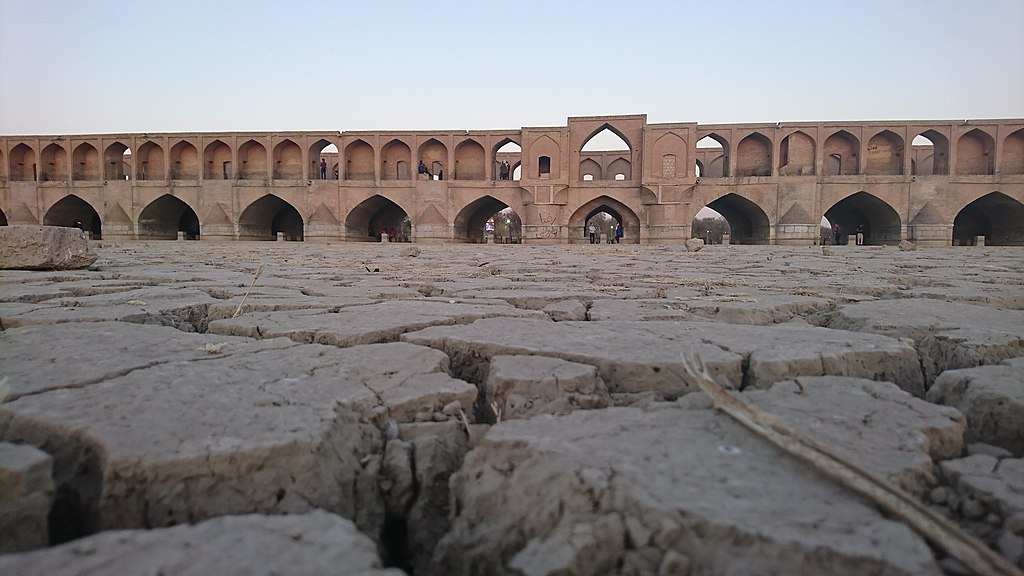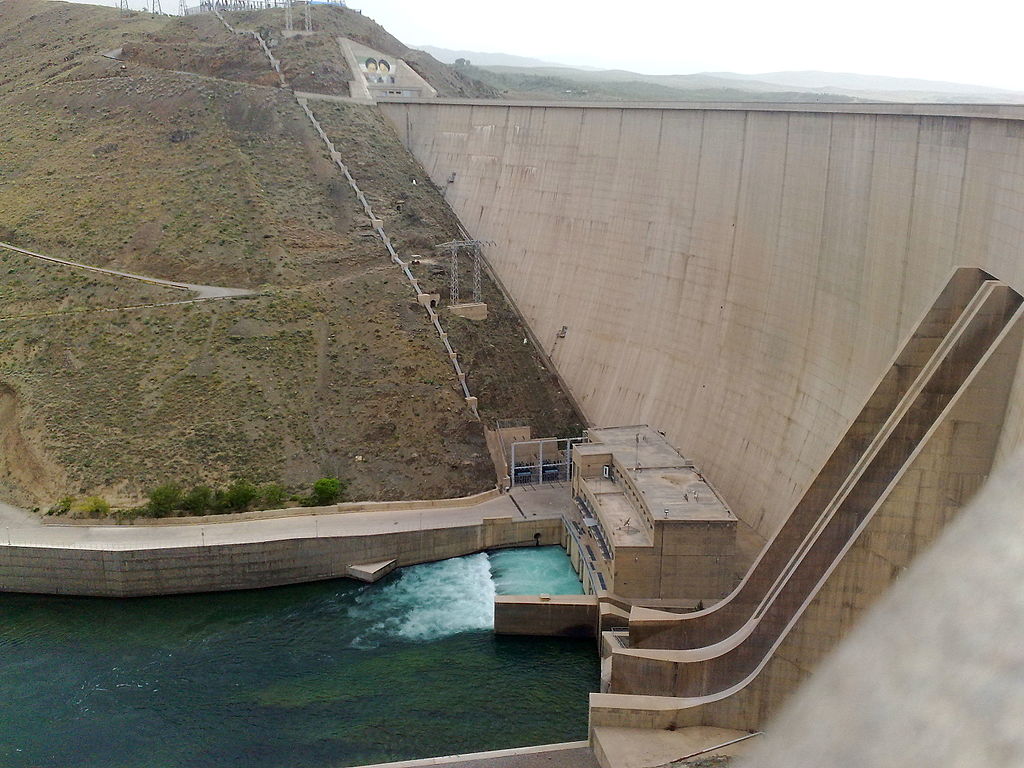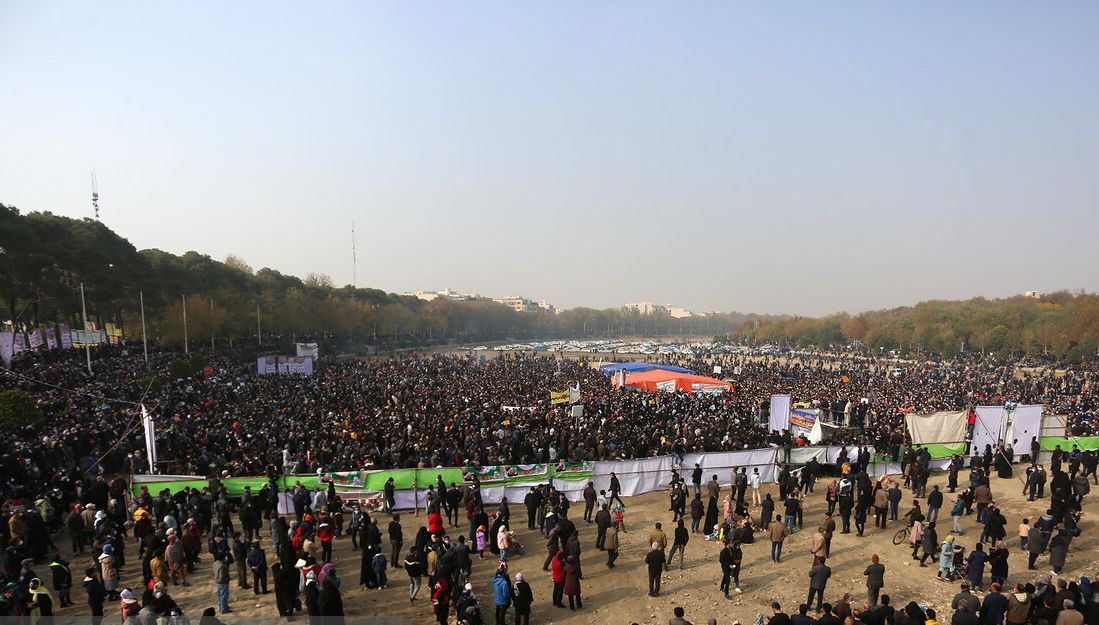Isfahan, Iran —(Map)
Last week, Iran’s government cracked down suddenly on people protesting over a lack of water in the city of Isfahan. Farmers there have been protesting for over two weeks because the nearby Zayanderoud River has run completely dry, making farming impossible.
The Zayanderoud River is one of the most famous rivers in Iran. Its name means “birth-giver”. But for the last several years, the river has been nearly dry.

(Source: Romain Bréget [CC BY-SA 4.0], via Wikimedia Commons.)
One reason for the lack of water is that Iran is suffering from a terrible drought that has affected roughly 97% of the country. This summer was Iran’s driest summer in 50 years. But there are other, man-made reasons for the lack of water in the Zayanderoud, and these are what protesters are complaining about.
Critics say Iran hasn’t managed its water well. Over the last 30 years, the country has built around 600 dams. Many of these were meant to generate electricity. Iran depends on hydropower for much of the country’s electricity.

(Source: Meghdad thrust [CC BY-SA 3.0], via Wikimedia Commons.)
Like many rivers in Iran, the water of the Zayanderoud has been used for many different purposes. Though much of it goes for farming, recently, more and more water has started going to factories. Near Isfahan, a system of pipes underground have taken much of the water away from farms. Instead, the water goes to factories in a nearby province. Water from Isfahan is also used as drinking water in the city of Qom.
The current protest began on November 9, when farmers began gathering in the dry riverbed to protest. For several weeks, the government allowed the protests to continue. Some interviews with protesting farmers were even shown on government-controlled TV stations. But as the protests began to spread beyond Isfahan, the government cracked down.
😕
This image has not been loaded because of your cookie choices. To view the content, you can accept 'Non-necessary' cookies.
The current protest began on November 9, when farmers began gathering in the dry riverbed to protest. As the protests began to spread beyond Isfahan, the government cracked down. Above, a huge protest on November 19.
Early last Thursday morning, security forces told farmers in the riverbed that they had 10 minutes to clear the area. But before the farmers could move, their tents were set on fire. The security forces used tear gas to move the farmers out. They also fired bullets into the air. Security forces demanded that the farmers announce their protest was over.
On Friday, the crackdown was even more intense. Security forces used tear gas and shotgun pellets on protesters both in the dry riverbed and in the city’s streets. Dozens of protesters were injured. Sixty-seven people were arrested. The internet in the area was cut to prevent protesters from posting to social media.

(Source: Khadije Naderi , Mehr News Agency [CC BY 4.0], via Wikimedia Commons.)
In July, there were also protests over water – mainly in Khuzestan Province, but also in other cities around Iran. The government cracked down violently on these protests, too. But it also opened a dam, which helped the farmers temporarily. So far, there’s no sign that the government plans to help Isfahan’s farmers in the same way.
Experts say Iran’s water problems aren’t likely to go away anytime soon. That’s because there simply is no longer enough water for all the people who need it.
😕
This map has not been loaded because of your cookie choices. To view the content, you can accept 'Non-necessary' cookies.
